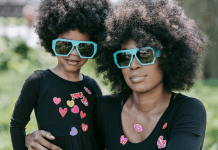
Are there toxic chemicals in feminine products? I’m here to share the information I’ve learned about what you’re putting inside your body and can recommend some amazing cleaner options for green feminine products.
Tampons, pads, and menstrual cups, oh my! This is an area often overlooked, but did you know that using conventional feminine care products can actually do more harm than good?

Are There Toxic Products in Feminine Products? Let’s Take a Look…
- Non-Organic Cotton: Cotton is one of the world’s dirtiest crops, meaning it is heavily sprayed with synthetic pesticides and herbicides. There was a study done recently that found 85% of tampons to be contaminated with glyphosate, which is a dangerous herbicide linked to cancer.
- Synthetic Rayon: This is a synthetic fiber that is used instead of cotton because it’s cheaper. It is made of bleached cellulose fibers derived from wood pulp, which can increase your risk for Toxic Shock Syndrome and bacteria growth.
- Bleach: This is used to make pads and tampons nice and white. It’s been linked to cancer and reproductive issues like endometriosis. (SOURCE)
- Fragrance: Unfortunately, the fragrance is not regulated by the FDA and a HUGE “no-no” ingredient for me because it can be made up of about 3,000 different chemicals, including carcinogens, phthalates, irritants, and neurotoxins. They are extremely harmful and are endocrine disruptors.
So, what do you reach for? For starters, opt for Certified Organic feminine products and/or use a menstrual cup (my personal favorite). But, before I get into the brands I like, for those unfamiliar with a menstrual cup, let’s start with that.
What is a Menstrual Cup?
A menstrual cup is a feminine hygiene device that is inserted into the vagina during menstruation. Its purpose is to collect menstrual fluid and prevent its leaking onto clothes. Preferably, they are made with medical-grade silicone.

What are the benefits of using a menstrual cup?
- For starters, why I was drawn to Saaltco menstrual cup was simply because they had different sizes. You can get a size small, regular, or a duo pack.
- These cups can last you up to 12 hours, you can sleep with them on, and are so comfortable. Seriously, you forget it’s there.
- One cup will last you 10 years and are inexpensive. Purchase a single cup for about $35-$40. You’d save over $1,500 at 300 tampons/yr. average per woman.
- Made with 100% medical grade silicone. BPA free and no latex or chemicals. They are also FDA registered and compliant.
- It has rounded edges for comfort and a patented leak prevention design to ensure it stays in place and is easy to remove without spills! You simply remove, empty, rinse, and reuse.
- Promotes healthy pH balance. No more dry tampon rubbing inside, making it uncomfortable. Hallelujah!
What makes Saaltco even better is they give back to those in need. In many countries such as Africa, Nepal, Venezuela, and elsehwere, girls are missing school because they don’t have access to appropriate hygiene as we do. Saaltco donates 2% of their revenue to period care and helps fund initiatives in education and sustainability. Can this company be any more impactful?!
Read More About Going Green with Tampons
The Best Clean Tampon Brands
Tampon Tribe is by far my favorite and most used. I love their menstrual cup and get their monthly subscriptions of some tampons and pads. Their products are certified organic, GOTS, and ICEA. They’re also free from chlorine bleach, and dioxin free. I love that it’s also hypoallergenic, plastic-free, and sustainable. Their cups contain no latex, rubber, PVC, or animal-derived materials.
Saaltco: One cup will last you 10 years and are inexpensive. Made in the USA and with 100% medical-grade silicone. BPA free and no latex or chemicals. They are also FDA registered and compliant. With every purchase of a Saaltco cup, they provide sustainable period care and education opportunities to those in need. They give back to women around the world which is amazing.
Have you experimented with any green alternatives of feminine products? What brands do you recommend?













